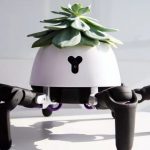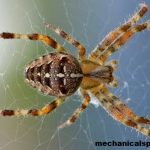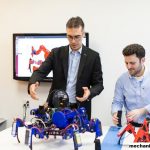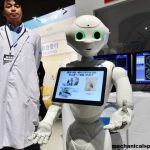It has been for a decade that three-dimensional printing has become a serious limitation that you cannot print an object larger than the print bed. As you know that three-dimensional may require a lot of space and a lot of heavy machinery to move the nozzle around when printing large-scale objects. But, you do not worry if you want to print a larger object, technicians at Siemens may have solution for the problem. Theychave created compact “spider robots working together to create bigger objects seemingly from thin air.
The “Siemens Spiders” are the result of two and a half years of R&D backed by an annual internal venture investment contest, the Siemens Automation & Control Seed Fund Program. According to, the spider structure was claimed as the perfect playground for 3-D printing. Nowadays web-slingers requires much a common desktop printer. They are commonly powered by batteries with six legs each. To be maneuverable and lightweight, the spider robots applies a “sidekick” for carrying PLA or the spools of polylactic acid which are heated during the printing process. Another reason why spider robots is perfect for 3-D printing because it is smart and collaborative. Large-scale printing can be slow and technicians can make the perfect construction for large-scale printing by focusing on different areas of the structure. The Siemens R&G groups is working to write code which helps to empower the robots to make their own decision about how to print the object. It can be concluded that the robots do not require special programming which makes printing as simple as uploading a request to the server as the robotscan be decided which the object’s section will be built and how efficient they work.
 In addition, the technician team of Siemens has successfully done various customizing, improving, as well as innovating since the project began in January 2014. It makes the project was possibly made the adoption of 3-D printing. For the widespread series has made the core components of printers less expensive and more sophisticated. Besides, advances in mobile technology use the long-lived lithium-ion batteries keeping the robot retreating to recharge. The depth-perception cameras and the precision sensor the robots can position themselves. However, these robots will not soon be released commercially. The team is still working on the third generation of prototypes. They also have refinements on the docket and the charging station where the robots will power themselves independently. In the future, the robots can be the great problem solution for 3-D large-scale printing.
In addition, the technician team of Siemens has successfully done various customizing, improving, as well as innovating since the project began in January 2014. It makes the project was possibly made the adoption of 3-D printing. For the widespread series has made the core components of printers less expensive and more sophisticated. Besides, advances in mobile technology use the long-lived lithium-ion batteries keeping the robot retreating to recharge. The depth-perception cameras and the precision sensor the robots can position themselves. However, these robots will not soon be released commercially. The team is still working on the third generation of prototypes. They also have refinements on the docket and the charging station where the robots will power themselves independently. In the future, the robots can be the great problem solution for 3-D large-scale printing.






